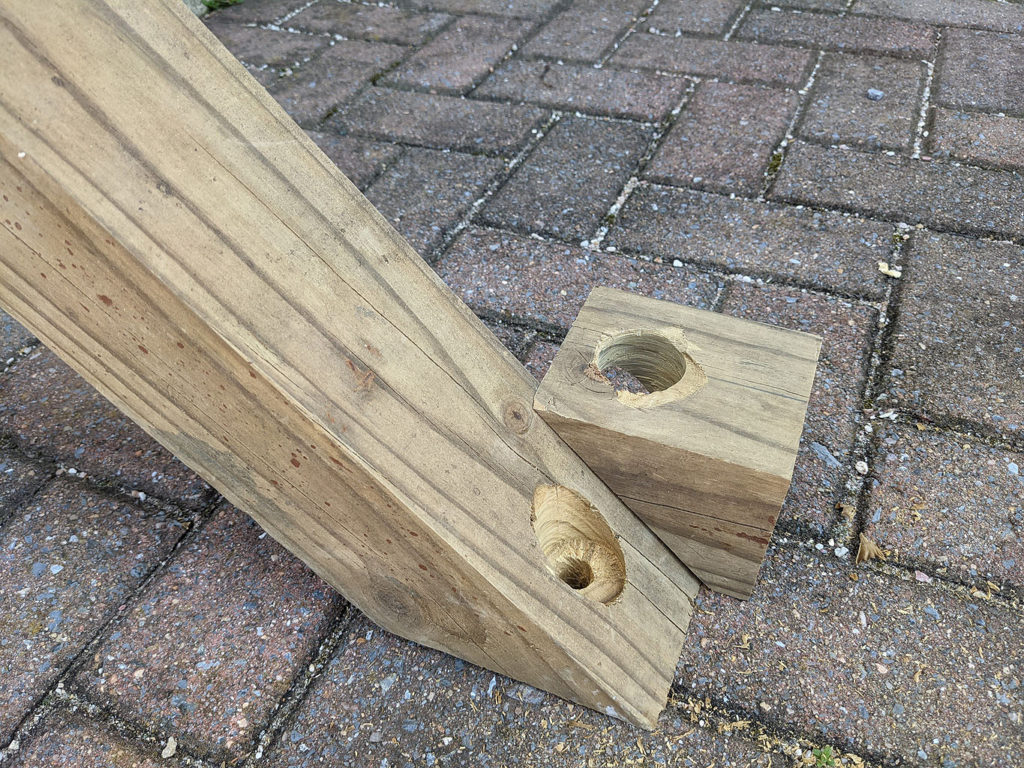
Drilling a large diameter counterbore at an angle “freehand” is difficult because the bit will only be in partial contact with the wood when starting to drill and it will have a tendency to skip across the surface. This was the situation I found myself in when I was volunteered to add diagonal braces to my daughter’s two-story high wooden deck. Each 40″ long brace required holes drilled at a 45 degree angle in order to attach it securely to the deck structure via 6″ long lag screws. One end was attached to the support post, one end to the deck beam. The 5/8″ diameter lag screw holes also needed to be centered inside a 1-1/2″ diameter counterbore to accommodate a washer. Not having a drill press handy to drill the counterbore, I came up with a simple jig to get the job done.
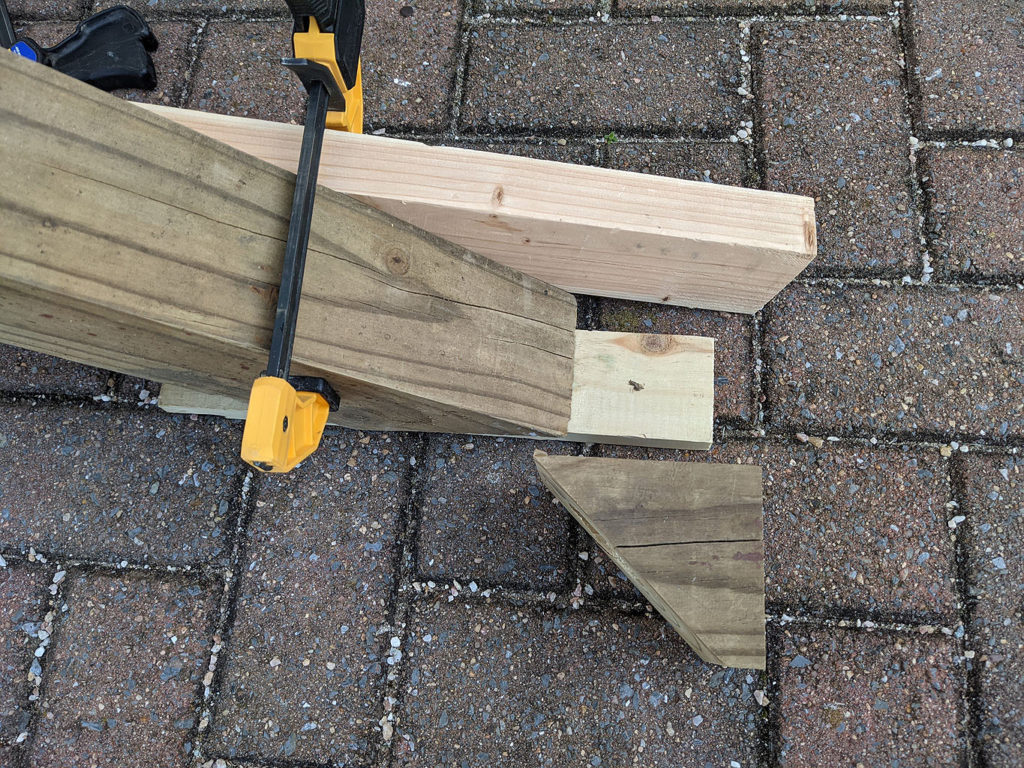
To make the jig, I used a chop saw to cut off the end of a piece of leftover 4″ x 4″ bracing at a 45 degree angle and then cut this angled piece off leaving a jig about 4″ long. I butted the angled end of the jig against one of the braces with the angled end of the brace flat against a support board, and clamped it in place. Using a square, I drew a line straight up from the center of the hole (marked on the side of the brace) to the top of the jig. This line was extended across the top of the jig and marked in the center of the 4″ wide piece. With the hole location established on the jig, I drilled a 3″ deep hole using a 1-1/2 diameter forstner bit that created both the guide hole in the jig as well as the counterbore in the brace board. I basically drilled until the forstner bit was in full contact with the brace board.
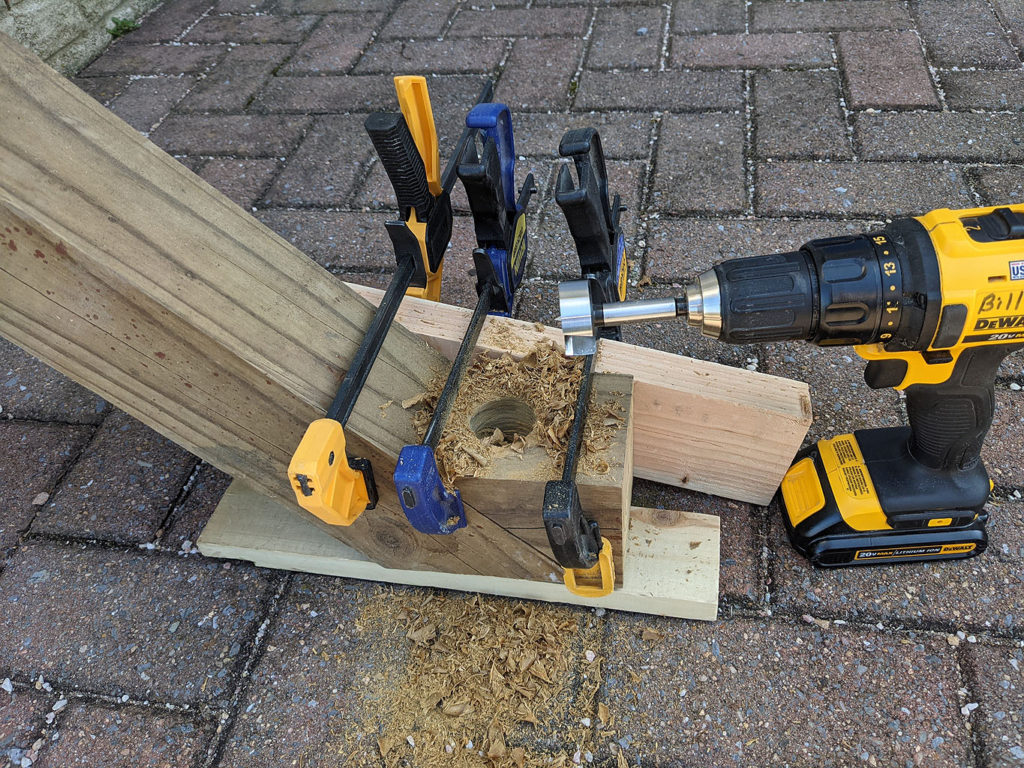
It worked out that drilling until the forstner was fully in the hole, with about 1/4″ protruding, resulted in the appropriate hole depth. After drilling and removing the jig, I was left with a flat counterbore with a small indent in the center. Tip: if you have a helper, ask him/her to “eyeball” the drilling operation to keep the bit vertical as viewed from the side and front.
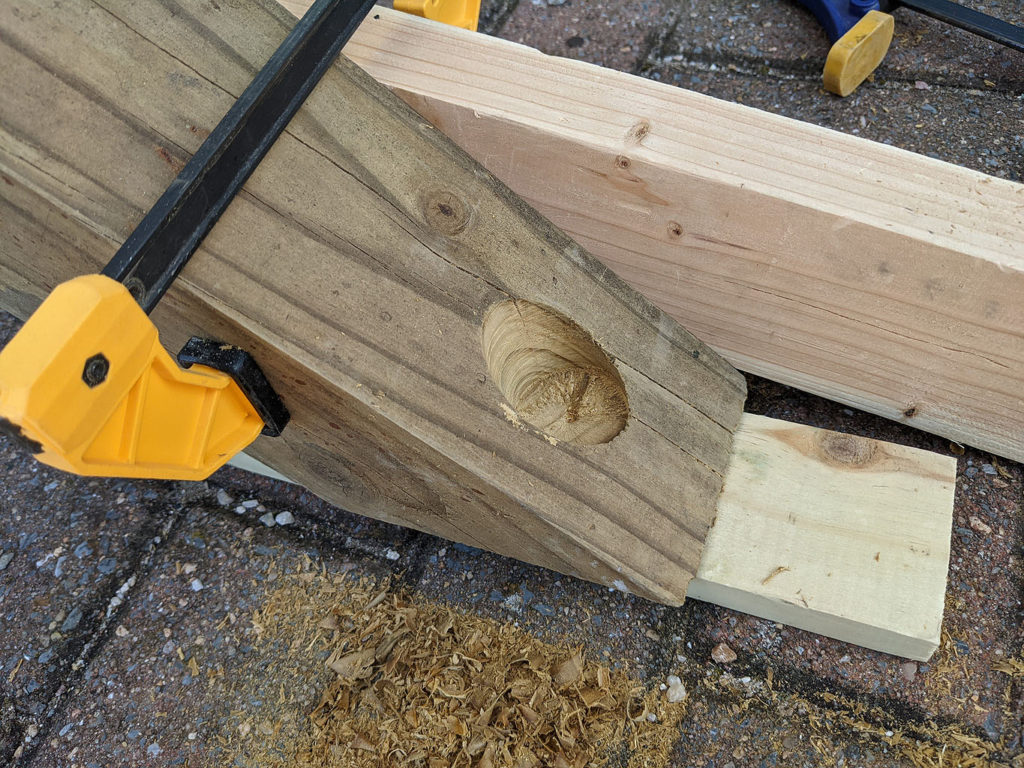
Using the forstner bit center indent as a guide, the final step was to drill a 5/8″ diameter guide hole for the lag screw. Having a sacrificial support board helps to produce a hole with minimal tear out.
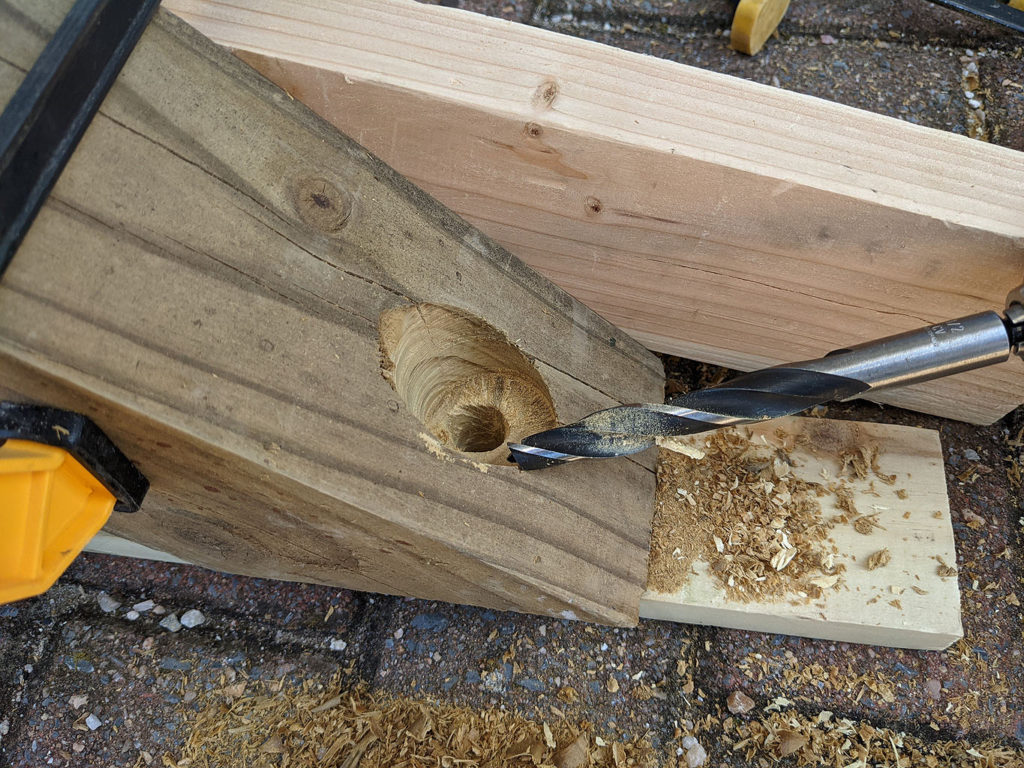
The photo below shows one of the brace pieces with a washer and lag screw in place. The first counterbore was a bit rough around the edges but subsequent ones were cleaner. As you might expect, the key is to keep the counterbore jig securely clamped in place to keep the bit from wandering.
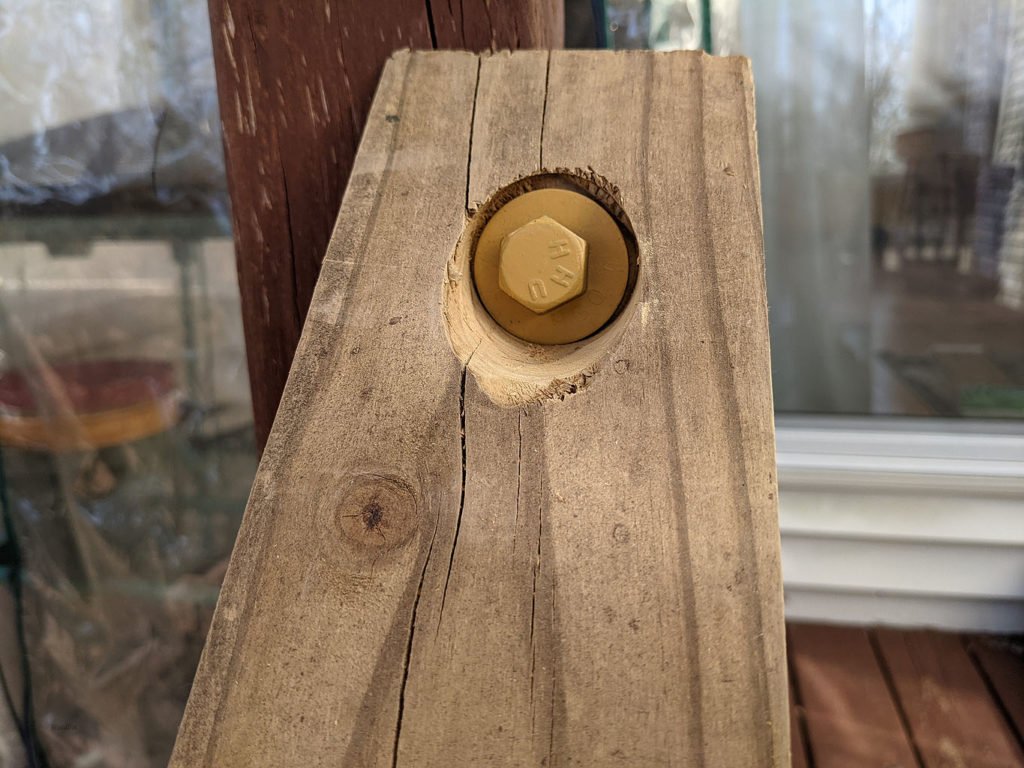
In retrospect, I would have made the counterbore jig longer than 4″ to provide more heft and clamping surface so it would better stay in place during drilling. I found myself fussing with the jig several times while drilling because it would shift slightly if I got too aggressive with the drilling. Perhaps I’ll incorporate this enhancement into a rev 2 counterbore jig if I get “volunteered” for another deck project…

